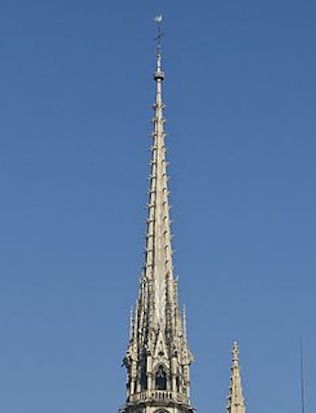The end of the year is usually a time when I reflect on the most rewarding and stimulating exhibitions of the past twelve months. There have been plenty of those for sure, both in the field of contemporary and Old Master art: the astonishingly profuse displays at the Venice Biennale, which seemed almost to fill the city this year; the wonderful Manet show at the Art Institute of Chicago; the celebrations of the so-called Year of Rembrandt, with magnificent exhibitions both at the Rijksmuseum and the British Museum’s Department of Prints and Drawings, to name just a few. But this year, sadly, I find all those bright spots overshadowed by a single dark cloud – a cloud that billowed into the sky above Paris in the week of Easter.
First I saw the great spire of Notre-Dame Cathedral tip-tilted at an alarming angle. Then as if in slow motion it hung in the air for a moment before plunging, in a scatter of lace-like Gothic fragments, into the flames engulfing the the cathedral below. Who could have imagined such a catastrophe? Like many others, I watched events unfold on the news, but still could hardly believe my eyes. Part of me kept hoping against hope that it was all some terrible prank, that this was not really happening. They were meant to be strengthening the fabric of the cathedral, not burning it down.
Notre-Dame means Our Lady: Mary, Mother of God. Many great churches of the Middle Ages were named after Mary because the medieval mind saw a parallel between the House of God and God’s mortal mother, whose body had been his first home on earth. If this year’s disaster had happened during the thirteenth or fourteenth centuries, the citizens of the time would have responded with...


